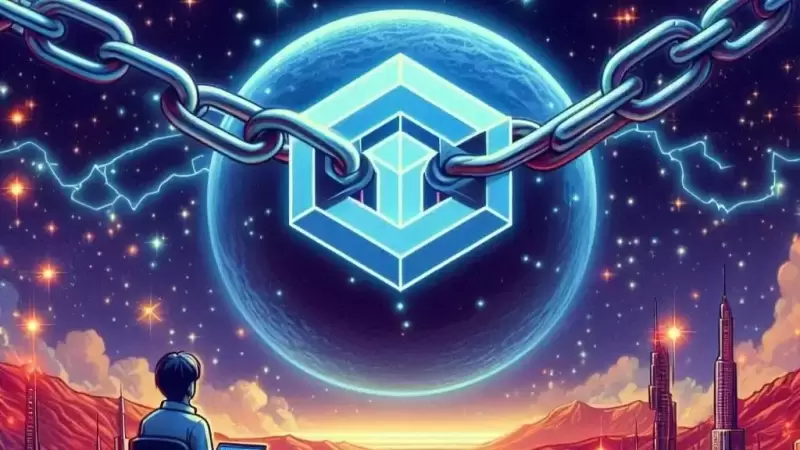 |
|
 |
|
 |
|
 |
|
 |
|
 |
|
 |
|
 |
|
 |
|
 |
|
 |
|
 |
|
 |
|
 |
|
 |
|
Two Ethereum community members, Kevin Owocki and Devansh Mehta, have proposed a dynamic fee structure for the Ethereum application layer to strike a balance between revenue generation for app builders and fairness in fee extraction.
In a proposal titled "Toward a More Balanced App Layer Economy," Owocki and Mehta suggest a simple equation that uses a square root function to proportionally lower the percentage of fees as the funding capital allocated to a particular project increases.
"We can modify the standard fee structure to better balance revenue generation with fairness in fee extraction," the authors stated.
"Let f be the percentage of collected fees that go to the protocol and c be the total funding capital allocated to a particular application (e.g., via grants, venture capital, community fundraising). Then we can use the following equation to adjust the percentage of collected fees according to the relative funding of an application:"
f = min(100,80 + 100 * sqrt(c/1e6)) / 10
The authors explained that once a particular application's funding crossed the $10 million level, the fees would be capped at 1%, ensuring that small app builders can easily develop decentralized applications without encountering excess fees. However, the proposal also encourages project and funding growth by capping the fees as developers scale their applications.
"We can set a lower limit on f to prevent it from getting too small. Perhaps f >= 1% is reasonable. We can also set an upper limit on f to avoid having it get too large. Perhaps f <= 10% is a reasonable upper bound. Finally, we can set a maximum funding threshold at which point the percentage of collected fees is no longer reduced. Perhaps this threshold is around $1 billion in funding capital, at which point it may be reasonable to begin collecting a larger percentage of collected fees to support the ecosystem at large.
"The goal is to strike a better balance between the economics of small app builders and the economics of large-scale applications and institutions that are building on the Ethereum ecosystem. We can do better than continuing to lower the percentage of collected fees as a desperate measure to try and keep pace with other emerging blockchains."
Owocki and Mehta's proposal to balance revenue generation and profitability among Ethereum's app builders strikes at the heart of the emerging concerns about economic imbalances and anomalies in the Ethereum ecosystem.
As Ethereum faces increasing pressure from high-throughput and low-cost blockchain networks to maintain its position as the dominant Web3 chain, it must maintain the attractiveness of its ecosystem for developers, users and institutions.
The threat posed by Solana and other rising smart contracts platforms is evident in the stark difference in developer activity between the two ecosystems. In 2024, the Solana ecosystem onboarded more developers than the Ethereum network. According to Santiment, Solana gained 7,625 new developers, while Ethereum gained 6,456.
Despite the surge in software developers building on the Solana network in 2024, Ethereum remains the dominant ecosystem for attracting developer talent, although the 2024 data shows that this position is no longer uncontested.
However, the threat posed by Solana and other emerging networks is pushing institutions to diversify their Web3 investments and scale back their contributions to the Ethereum ecosystem.
According to onchain analytics firm Santiment, Ethereum fees dropped to five-year lows in April 2025 due to low activity on the Ethereum base layer resulting from reduced demand for smart contract operations like decentralized finance.
This reduced demand is leading to many institutions scaling back their Ether (ETH) holdings or selling off portions of their investment as investor sentiment toward the first-ever smart-contract platform continues to erode without any clear catalysts for a reversal.
免責聲明:info@kdj.com
所提供的資訊並非交易建議。 kDJ.com對任何基於本文提供的資訊進行的投資不承擔任何責任。加密貨幣波動性較大,建議您充分研究後謹慎投資!
如果您認為本網站使用的內容侵犯了您的版權,請立即聯絡我們(info@kdj.com),我們將及時刪除。
-

- 鍊鍊接(鏈接)準備重新啟動其關鍵阻力水平時進行突破
- 2025-04-29 15:55:12
- 在市場上進行了短暫的集會之後,Link試圖集會,但未能克服15美元的電阻標記。
-

- 薩奎恩·巴克利(Saquon Barkley)與特朗普總統閒逛,然後老鷹隊的白宮訪問
- 2025-04-29 15:55:12
- 費城老鷹隊週一在白宮與唐納德·特朗普總統一起訪問了儀式,以慶祝他們的超級碗冠軍。
-

-

-

- Dogecoin的價格可能已經為重大突破做好準備
- 2025-04-29 15:45:12
- 隨著技術和宏觀經濟指標為潛在的看漲集會,Dogecoin的價格可能已經為重大突破做好了準備。
-

-

- Dogecoin(Doge)打破了50天的EMA,針對0.30美元的電阻區
- 2025-04-29 15:40:12
- (Doge)目前的交易高於其50天的EMA,表明趨勢逆轉。
-

-























































